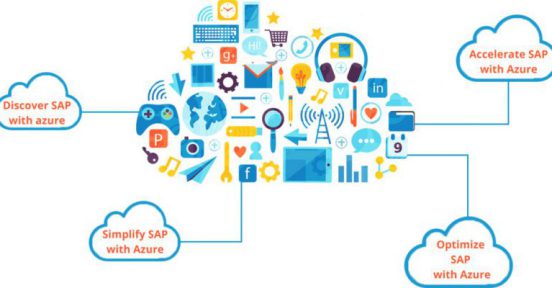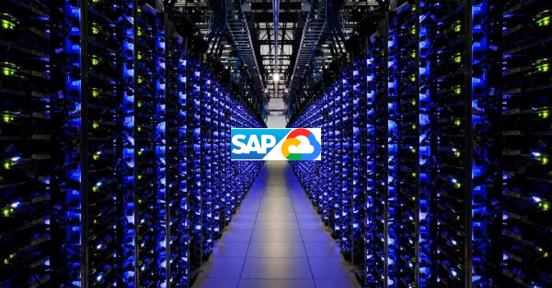30 . 11 . 2023
Security Operations Center (SOC), the formula for efficient use
All organizations need a Security Operations Center (SOC) to guarantee operational continuity. Learn how you can boost their efficiency.
Table of contents
All organizations need a Security Operations Center (SOC) to guarantee operational continuity. Learn how you can boost their efficiency.
According to the report “Uso de inteligencia artificial y big data en las empresas 2023” from the Observatorio Nacional de las Telecomunicaciones y de la Sociedad de la Información, 93.9% of large Spanish companies have digitized part of their tasks. In Latin America, according to the report “Sociedad Digital en América Latina 2023” by the Fundación Telefónica, 77.3% of large companies have part of their tasks digitized.
These figures show that all companies need to optimize their management regarding computer security, which is possible thanks to a Security Operations Center (SOC). In this article, we will address its importance, how you can structure the workflow to be efficient, and what human and technological equipment you will need.
What is a Security Operations Center (SOC) and why is it crucial in cyber defense?
A Security Operations Center (SOC) is an internal or outsourced team of cybersecurity experts that constantly monitors an organization’s entire IT infrastructure.
Its function is to detect computer security incidents in real-time and address them as quickly and efficiently as possible. They are responsible for monitoring and protecting the technology, network, servers, applications, and hardware.
As we will see later, the key to its efficiency is combining specialized computer security technologies with human expertise. In this way, it is possible:
- Ensure that security incidents are appropriately identified, analyzed, investigated, and reported.
- Monitor, detect, and perform advanced alert analysis to locate possible threats early. Thus, by correlating information and discovering hidden patterns, they can determine whether an activity is benign or suspicious.
- Respond quickly to incidents, using predefined contingency plans and forensic analysis techniques.
- Recover quickly from security incidents, investigating, determining their scope, and taking measures to contain it.
- Minimize risks to the correct functioning of all the systems that take part in the security infrastructure, collecting the events generated on the devices, processing them, and applying filtering rules, etc.
- Identify improvements in the security situation of an organization.
In other words, the great benefit of having or outsourcing a SOC is that it results in improved preventive measures and security policies. While enabling faster threat detection and a more effective and cost-effective response to security threats. Likewise, it is a key piece to strengthen customer trust and ensure compliance with regulations related to information protection.
3 stages of an efficient workflow in a SOC
The basic work structure of a Security Operations Center is comparable to the medical system. Where there is a first line of defense, an emergency response team, specialized teams in different branches of security, and a set of policies and tools that make all the components fit together perfectly.
Below, we tell you which are the 3 stages of an efficient workflow for a Security Operations Center.
1) Detection
An organization is made up of assets, such as servers, mobile devices, and user accounts, among others, that generate numerous events related to its operation (errors, connections, processes, etc.).
Therefore, a Security Operations Center uses a set of tools that correlate the most relevant security events and generate alerts continuously. Its analysis is based on indicators of compromise (IOC) and indicators of attack (IOA).
In this first instance, the alerts are analyzed by the team of level 1 cybersecurity experts, made up of analysts who constantly monitor, analyze, and prioritize the alerts. They triage based on the information collected to determine if these alerts and threats can become security incidents or if they are ‘false positives’.
2) Research
When a threat is detected, Tier 1 analysts investigate to understand the scope and severity of the incident. Once the initial triage has been carried out and if this team has not been able to resolve it, the event is referred to Level 2.
It is responsible for responding to alerts after the initial triage carried out by level 1, using a previously defined methodology and processes. Collate information from different sources, determining if it affects critical systems and reviewing which data sets were impacted. In this in-depth analysis, security tools are used to detect attacks and determine whether it is a real incident or false positives.
Within this instance, threat hunters also operate, carrying out proactive searches for signs of cyberattacks throughout the infrastructure.
3) Answer
When the security incident is confirmed, the response team comes into play and will be responsible for assessing the situation and taking the necessary measures for containment and mitigation. This may include updating security rules, blocking malicious IP addresses, or recovering data.
Once the incident is resolved, reports and documentation are generated with the conclusions obtained, while the detected vulnerabilities are corrected.
Technology + Human team, the formula for an efficient Security Operations Center
As we mentioned, a Security Operations Center (SOC) is much more than a room full of monitors and flashing screens. It is a multidisciplinary team of cybersecurity experts that works together to identify, mitigate, and respond to threats, coupled with specific technological tools.
A SOC is the IT “health” team of an organization, so it requires a wide range of skills and knowledge. How can they be:
- Security Analysts,
- System engineers,
- Experts in Data Analysis,
- Incident response specialists,
- Forensic investigators for data recovery (clues or evidence),
- SOC manager, among others.
Beyond their skills and knowledge, the Security Operations Center team faces the challenge of being one step ahead of cybercriminals, to do so they require continuous training and development.
A robust technological platform to confront digital threats
In addition to its human capital, the Security Operations Center leverages a robust technological platform to confront digital threats. In this sense, the main tools of this infrastructure are:
- Intrusion Detection Systems (IDS) to monitor network traffic and system events for suspicious activity.
- Intrusion Prevention Systems (IPS) that, upon detecting suspicious activity, can take measures to stop the attack, such as blocking traffic or removing malware.
- Log Analysis Tools that allow analysts to discover hidden clues and clues.
- Automation of repetitive tasks, allowing experts to focus on the most sophisticated threats.
- Security Information and Event Management (SIEM) platforms that collect and correlate data from various sources to identify patterns and trends, being an invaluable resource for decision-making. Within these cloud platforms, we can find Microsoft Azure Sentinel, a highly scalable solution that allows it to adapt to the changing needs of the organization. Additionally, analysts can take advantage of its powerful data analysis capabilities and integration with other security tools to strengthen threat detection and response.
In conclusion,
To prevent, respond, and mitigate threats with agility and efficiency, it is necessary to have computer security experts, both internally and externally. At the same time, use specific technologies that collect information and automate repetitive parts of the process.

If you need to boost the cibersecurity of your organization, we can help you. Write to us.


